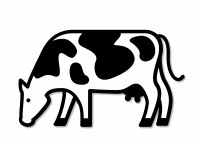Understanding and Mitigating Lameness
Event Details
Date
March 22, 2022
Time
10:00am - 12:30pm
Location
Via Zoom
Host
Cornell CALS, CCE and PRO-DAIRY

Understanding and Mitigating Lameness - Virtual Workshop
March 22, 2022 | 10:00am - 12:30pm
This free virtual workshop is for anyone who works with dairy cattle. This program will cover how to identify lameness, what factors cause lameness, and practical strategies to avoid and mitigate lameness on your dairy.
Workshop Agenda
10:00am - 10:15am - Economic Impact of Lameness: A brief overview of the impact lameness has on farm profitability due to milk loss, delayed conception, and costs related to extra handling, treatment, and early culling.
10:15am - 11:00am - Risk Factors and Best Management Practice: Improving lameness in your dairy herd needs a multi-faceted approach. Presenters will discuss herd management and facility factors that are known risk factors for lameness and strategies to reduce lameness on your farm.
11:00am - 11:15am - Foot Baths: A brief discussion on the best practices for implementing and managing footbaths.
11:15am - Noon - Effective Lameness Detection: Early detection of lameness combined with a routine foot-trimming program is critical to minimize the impact on the farm.
Noon - 12:30pm - Questions for presenters.
We can offer this program at no cost to participants because of the generous support of our sponsors.
Registration is now open for this free event.
Upcoming Events
2026 Corn & Soybean Day
January 20, 2026 : Corn & Soybean Day - Hamilton
Hamilton, NY
Lunch included. 2.75 DEC Credits available
January 21, 2026 : Corn & Soybean Day - Ballston Spa
Ballston Spa, NY
Lunch included. 2.75 DEC Credits available
I Thought I Was Covered for That! - Farm Insurance Webinar Series
January 13, 2026
January 20, 2026
January 27, 2026
February 3, 2026
February 10, 2026
Free Webinar Series
Passing the Torch - Planning Your Farm's Future
January 27 - January 28, 2026
Choose from two locations for this FREE event.
Announcements
Statewide Field Crop Pathology Needs Assessment Survey
Your input is wanted for identifying priorities!Sign Up for Our Weekly E-Newsletter
We send out a bi-weekly e-newsletter that has announcements, upcoming programs, and opportunities for you! Registration is quick, easy, and free. Click here to sign up today!Farmers Can Join MeatSuite For Free!
MeatSuite.com is a free resource provided by Cornell University where NY meat farmers can create a farm profile and list their bulk (wholes, halves, quarters) and bundled (i.e. Grilling Bundle) meat products.Why should farmers join?
1. It's free and easy!
2. Connect with more local customers. In the past year the MeatSuite.com farm directory had 8,300 visits from New York consumers. Farm profiles get as many as 25 views per month from potential local customers. We also spotlight MeatSuite farms on social media and bring attention and purchases to farms through highlights and giveaways.
How do I join?
Farmers can visit https://www.meatsuite.com/farmers/ to create a free farm profile. You must list at least one product for your farm's profile to go live. You'll also have access to Cornell's free Meat Price Calculator, a helpful tool for pricing your meat to make a profit.
While you're on MeatSuite, check out the "Creating Consumer-Friendly Bulk Meats" publication on the log-in page. It has tips on how to create bulk meat products that are easier for first-time buyers to say "yes" to.
If you have any questions as you create your farm profile or products, we're here to help! Please email Matt LeRoux at mnl28@cornell.edu.





